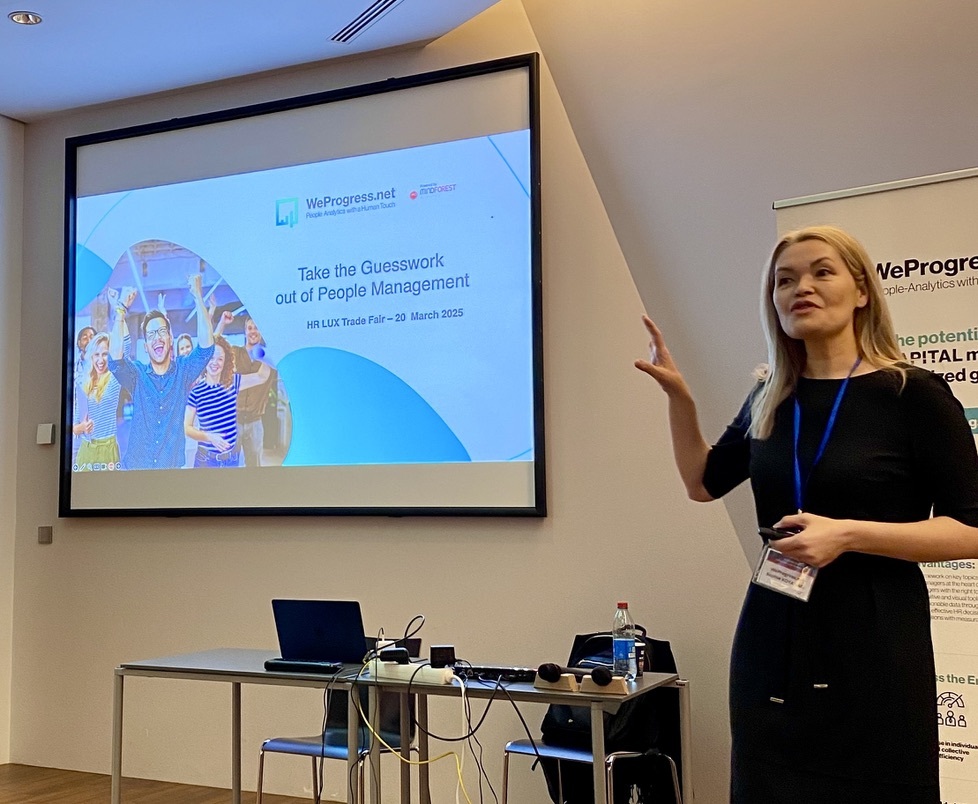7 key factors encouraging employee engagement
There is a common misconception that communication and financial compensation (increase, bonus) are enough to influence employee commitment. However, commitment is complex and depends on several factors.
Emotions constitute an important factor in engagement and directly affect an employee’s level of engagement[1].
In addition, this factor is even more important in SMEs, where the feeling of engagement is more strongly linked to the “me factor”, as the employee has a direct impact on the company’s results, and feels important and valued by the company.
In an SME, and increasingly in so-called "liberated" organisations, employees want to be trusted to carry out their tasks with minimal supervision.
Research by Ruyle, Eichinge & De Meuse (2009) has identified 11 main factors that impact employee engagement. Other studies also mention other factors, but here are some keys to ensuring employee engagement in your company.
Strategic alignment
Employees are familiar with and believe in the company's vision and its projected roll out. Employees also trust the decisions taken by senior management.
Personal influence
Employees know that their opinion is valued and welcome. They believe that they can determine the best way of working, that they can innovate and that their input (whether successful or not) will be appreciated.
Career path
Career opportunities as well as the type of career can also make an employee more engaged. This is why a company should support employee career paths by giving them the chance to progress on the basis of their key missions, which challenge them and are aligned to their competences. Thanks to investment - both in monetary and time terms - in employee training, the employee will appreciate that the company is interested in his/her professional development. Every company should therefore make a variety of training options available, as well as the chance to use a newly acquired skill or to even learn via less conventional training methods such as job shadowing.
Flexibility and autonomy
Flexibility can also contribute to employee engagement, for example if they can arrange their working hours more flexibly to cope with family obligations or even to work from home. In the same way of flexibility, autonomy (or even empowerment and responsibilisation) at work and concerning the way they can organise their work can make employees feel more engaged. They feel more responsible and confident, rather than being constantly subjected to checks by their manager or having to ask for approval for the smallest decision. This is why it is important to grant a certain degree of liberty to employees to enable them to take decisions and find solutions on their own.
Employee equality
Salary equality goes hand in hand with employee engagement. It is important that employees understand how the salary structure Is defines and what they need to achieve to gains promotion. By paying equitable salaries and acting transparently, employees will understand what is at stake and perform well to merit promotion.
Quality of the relationship with their line manager
The quality of the management team has a direct impact on performance and employee retention. It is hardly surprising to know that many employees leave a company of a bad manager.
Employee recognition
You have to know how to give sincere feedback and recognise employee achievements and their progress. It is true that employees, who enjoy a positive relationship with management, are more engaged, and as we already said: a satisfied and engaged employee will bring positive energy to the workplace and thus benefit the company.
When working on employee engagement, however, it is important to bear in mind that not all employees want the same opportunities or rewards. Similarly, they will react differently to the levers used to influence engagement. To meet the expectations of each individual,
You will need to implement a segmented and differentiated approach accompanied by tailored strategies.
[1] Emotional drivers of employee engagement, Dale Carnegie Training White Paper, 2012.
https://hbr.org/2016/12/design-your-employee-experience-as-thoughtfully-as-you-design-your-customer-experience
http://www.lombard-media.lu/pdf/0509_TP_Engagement.pdf
http://www.keepem.com/doc_files/Towers_Perrin_Talent_2003(TheFinal).pdf
http://www.dalecarnegie.com/assets/1/7/Emotional_Drivers_of_Employee_Engagement.pdf
http://iveybusinessjournal.com/publication/the-four-intrinsic-rewards-that-drive-employee-engagement/
https://hbr.org/2015/12/the-two-sides-of-employee-engagement
WANT TO RECEIVE OUR LATEST THOUGHT LEADERSHIP CONTENT?
Related posts
 Take the Guesswork out of People Management
Take the Guesswork out of People Management
 From processes to people: achieving quality
From processes to people: achieving quality
 Daring to lead Positive Transformation: What if Positive Emotional Capital was your key to sustainable change?
Daring to lead Positive Transformation: What if Positive Emotional Capital was your key to sustainable change?
 Why hire Change management professionals? We can do it alone!
Why hire Change management professionals? We can do it alone!
 Digital Transformation and Change Management: Lessons shared in an event hosted by Cebi and MindForest
Digital Transformation and Change Management: Lessons shared in an event hosted by Cebi and MindForest



